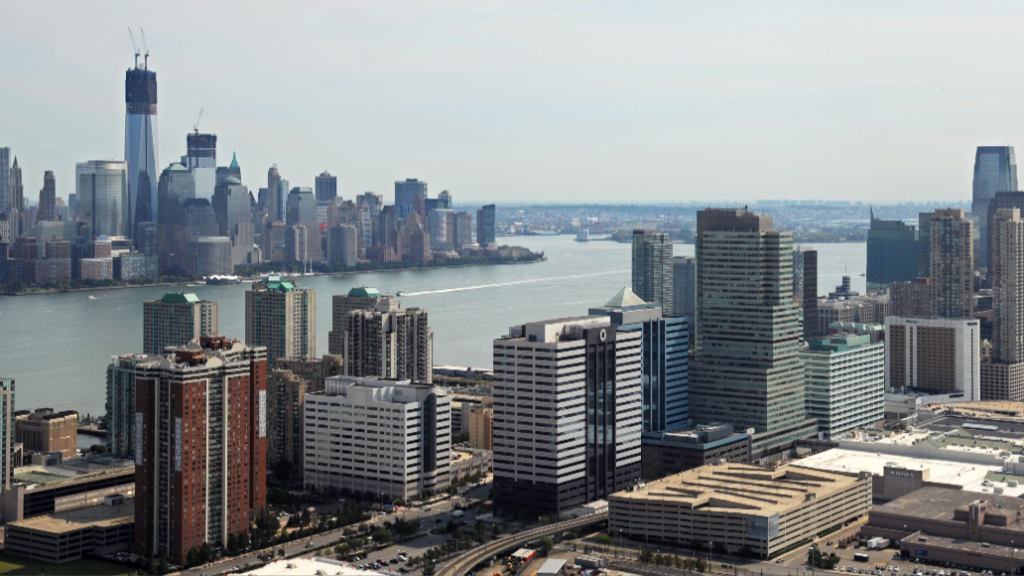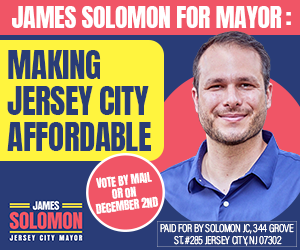In an editorial, Jersey City resident Robert Choi defines what he thinks “inequality” means in Jersey City and what the next mayor must change.

Inequality has become a catch-all explanation for almost every difference in outcome in Jersey City. Housing prices rise, property taxes vary, neighborhoods develop unevenly—and all of it gets folded into a single word as though every disparity must share a single cause.
The modern conversation assumes that if numbers don’t line up neatly across groups or neighborhoods, something must be wrong.
Yet much of what gets labeled inequality today reflects differences created by regulation, not by markets—and certainly not by human nature.
A major source of confusion comes from the way we try to measure inequality. Tools like the Gini Index treat society as if there were a natural baseline of perfect equality—a hypothetical world in which every person has identical income, identical preferences, identical life choices, and identical outcomes.
The distance between the real world and that imaginary baseline is then presented as a measure of injustice or malfunction. But no society in human history has ever resembled this theoretical starting point.
People differ in drive, ambition, risk tolerance, family structure, education decisions, the value they place on time versus money, and countless other factors.
Variation is inseparable from freedom. So when we use a statistical yardstick built on an imagined state of perfect sameness, it’s no surprise that every real community appears “unequal,” even when nothing unjust has occurred.
The issue becomes far more serious in Jersey City because the disparities that matter most—the ones that produce genuine hardship—don’t come from natural differences in human behavior. They come from barriers imposed by law.
The city’s biggest contributor to harmful inequality isn’t the market—it’s the fact that the market isn’t allowed to function.
Housing affordability is the clearest example. Residents often blame developers or abstract economic forces for rising rents, but the city’s zoning map does more to inflate prices than any landlord ever could.
When zoning caps building heights, bans multi-unit homes on huge portions of the city, imposes rigid parking requirements, and subjects projects to unpredictable board approvals, it manufactures scarcity.
Scarcity raises prices. Then those prices get fed into inequality metrics, which tell us the city is “unequal,” as if this were a natural outcome rather than a political creation.
The approval process itself compounds the problem. A project can meet every written rule and still face months or years of delay because community boards or planning bodies oppose it.
That uncertainty adds immense cost before construction even begins. Developers adjust by building fewer units, building only luxury units, or abandoning projects altogether.
The resulting shortage is then blamed on “the market,” even though the shortage is entirely the product of regulatory obstruction.
Property taxes tell a similar story. Jersey City’s system creates wildly uneven burdens, not because some residents are favored by nature or markets, but because the rules themselves generate imbalances.
Small lots in older neighborhoods may be taxed as if they could be developed vertically—even when zoning forbids that possibility.
Meanwhile, areas with more permissive zoning enjoy lower effective burdens relative to their potential value. Restrictions on air rights intensify these gaps by locking whole sections of the city into limited use regardless of demand.
These disparities show up in statistical measures and get labeled “inequality,” but the underlying cause is administrative design.
The mistake is treating every measured disparity as proof of injustice. Measures like the Gini Index don’t ask whether the disparity came from voluntary differences or from legal restrictions; they simply register a numerical gap and present it as a social problem.
But Jersey City’s biggest problems are not the result of people making different choices—they are the result of residents being prevented from making choices at all.
When people can’t afford to live where they work because building more homes is illegal, that isn’t a natural inequality. When taxes rise not because of market forces but because land is artificially limited in what it can become, that isn’t a natural inequality.
These are policy outcomes.
The city should distinguish between disparities that naturally arise in a free society and disparities that arise because government placed barriers in front of opportunity.
Jersey City’s most painful inequalities—housing scarcity, high prices, neighborhood stagnation—are not evidence of markets running unchecked.
They are evidence of markets being tightly constrained by rules that treat scarcity as a planning principle.
The mistake is pretending that any statistical deviation from perfect uniformity is a crisis requiring more regulation or redistribution. The real crisis is that the city restricts the very activities that would expand housing, lower prices, and broaden opportunity.
If Jersey City wants less hardship, it doesn’t need to chase a mythical baseline of perfect equality. It needs to remove the constraints that create artificial inequality in the first place.









